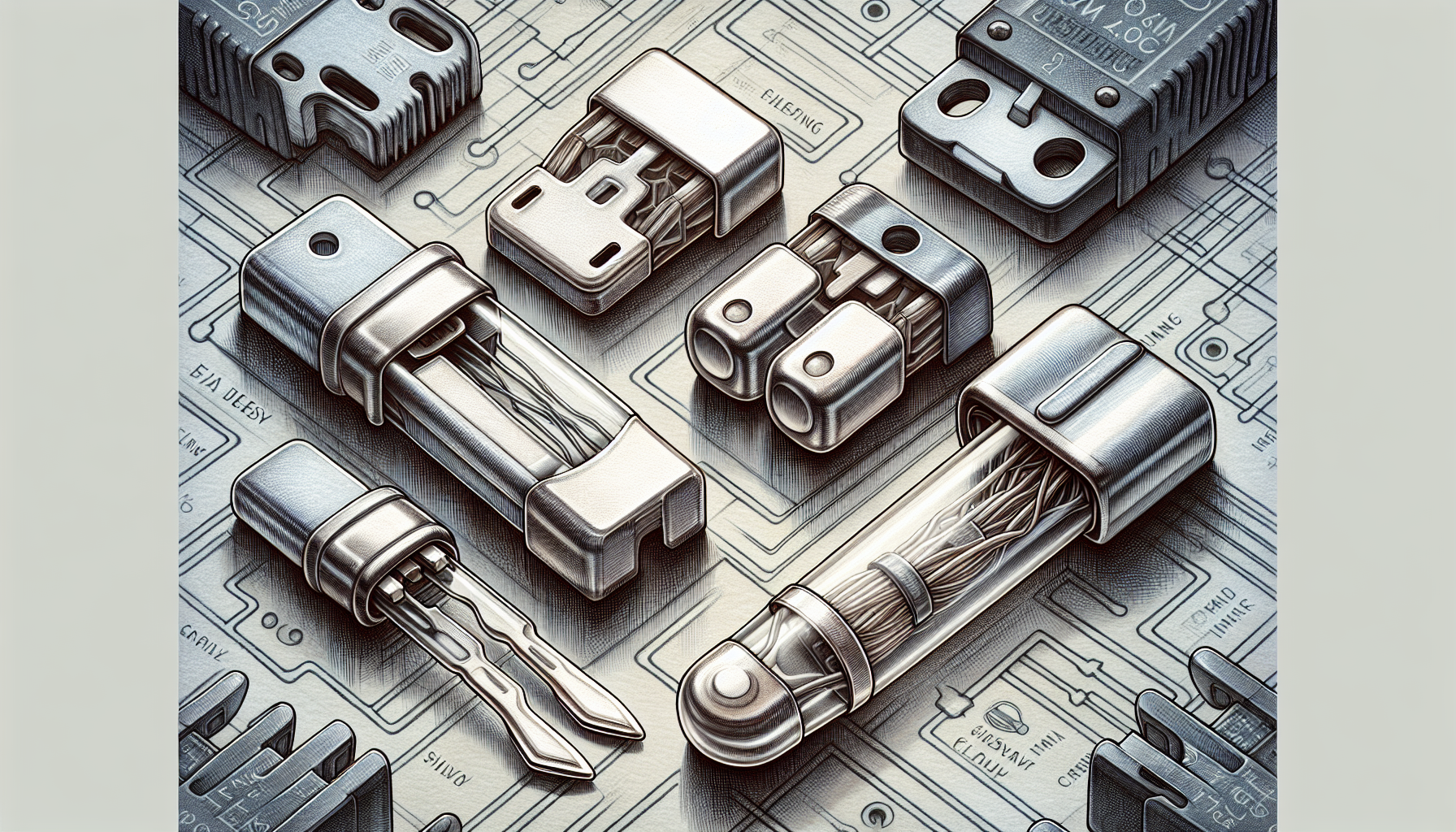Need to know ‘how much is a car fuze’? Prices for a car fuse range from $5 to $300, with costs varying based on DIY versus professional replacement and the type of fuse your vehicle requires. This article lays out everything from pricing to the process of replacement, ensuring you don’t overpay for parts or services. With a focus on clear, concise information, you’ll learn how to spot a blown fuse, safely replace it yourself, and understand the role of car fuses in your vehicle’s overall health – all geared towards making an informed decision without the extra fuss.
Key Takeaways
- Replacing a car fuse can generally cost between $5 to $300, considering factors like the vehicle make and model, type of fuse, and whether you’re doing it yourself or paying for labor at a professional service.
- Indicators of a blown fuse include issues like non-functioning power windows, radios, and headlights. To replace fuses safely, turn off the ignition and remove the negative battery cable before starting, and ensure you’re using the correct amperage for the replacement.
- You can save on fuse replacement by purchasing aftermarket fuses or buying in bulk, but always ensure compatibility and quality to prevent electrical system damage and keep your vehicle safe.
Price Range for Car Fuse Replacement

Some might say that car maintenance is like a box of chocolates – you never know what you’re gonna get. One day, everything works fine, and the next, you’re faced with a blown fuse. But how much does it cost to get back on the sunny side of the road?
The cost to replace a car fuse can range from $5 to $300, contingent on several factors. Sounds like a wide range, right? Well, for a DIY replacement, common car fuses typically cost between $10 and $20, while specialty fuses can exceed $100 excluding diagnostic fees.
Now, if you’re thinking, “I’ll leave it to the pros,” be prepared for labor costs, which could tack on about an hour’s worth of labor to your bill.
Factors Influencing Fuse Costs
So, you might be wondering, “Why such a big price range?” Well, the cost of car fuses can vary widely due to a few factors. The make and model of your car significantly influence the cost of replacement fuses, as different vehicles may require specific types of fuses. For example, specialty fuses for certain vehicles may be significantly more expensive, with some costing over $100 each.
Just when you thought it was all about the type of car you drive, think again. The type of fuse itself also influences the cost. Fuses for high-energy circuits tend to be more expensive than standard blade fuses., which might be priced at $5 or more each.
Selecting the appropriate fuse requires matching it to the vehicle’s make and model, as well as the electrical equipment’s current rating and specific circuit needs.
Cost Comparison: Dealership vs. Auto Parts Store
You might be pondering over where to purchase your fuses. Well, you have a few options:
- Dealership: Costs for fuses are generally higher compared to those at auto parts stores or online retailers.
- Auto parts store: If budget-friendly is what you’re after, an auto parts store could be your go-to.
- Online retailers: Another option is to purchase fuses from online retailers.
However, if you want the comfort of getting the exact match for your vehicle without the hassle of searching, heading to a dealership might be worth the extra cost. But remember, buying fuses from an auto parts store is often less expensive than purchasing them at a dealership. So, weigh your options and choose what suits you best!
Identifying When You Need a New Fuse

Having covered the costs and sourcing of fuses, But how do you know when you need a new one? Well, your car will give you some signs. Symptoms of a blown fuse in a vehicle’s electrical system include non-operational power windows, radio and heater fans ceasing to function, and failures in headlights and taillights.
Other tell-tale signs could be malfunctioning lights, electrical accessories not working, or a car that fails to start. Visually, a blown fuse often has a blackened inside or a visible break in the metal filament. It’s important to pay attention to these signs, as automotive fuses serve as a critical safety component, disconnecting circuits in the event of overcurrent or short-circuiting to prevent further damage to the vehicle’s electrical system.
Diagnosing Electrical Issues
Once your car shows signs of a blown fuse, the next step is to diagnose the issue. Well, it’s time to put on your detective hat and diagnose the issue. A visual inspection of the fuse’s transparent plastic casing can reveal if a fuse is blown by the presence of a melted metal filament or discoloration.
But it’s not just about identifying the problem. Neglecting to replace blown fuses can result in overheated wires, increasing the risk of damage and leading to more expensive repairs. To avoid unnecessary costs, using a multimeter to test a fuse’s functionality is a cost-effective strategy to determine if a fuse needs replacement, potentially avoiding the unnecessary replacement of all fuses.
Safety Precautions Before Replacing Fuses
With the issue diagnosed, you can proceed to replace the fuse. But wait! Before you dive in, there are some safety precautions to consider.
First, make sure that the vehicle’s ignition is turned off to eliminate any risk of electrical shock or hazards. Ensuring the circuit is discharged before replacing a fuse can prevent electrical injuries and protect the vehicle’s electrical system. Also, removing the negative battery cable is crucial to halt current flow, which guarantees a safe environment to replace fuses and prevents accidental activation of vehicle components.
Step-by-Step Guide to Replacing Your Car Fuse

Having diagnosed the problem and taken the necessary safety measures, you can now proceed to replace the fuse. The car’s fuse panel is typically located under the steering wheel; access it by removing the panel’s cover.
Next, to replace a fuse, follow these steps:
- Identify the function of each fuse using the diagram on the reverse of the cover.
- Remove the broken fuse carefully using tools or hands.
- Replace the broken fuse with a new one.
Doing the replacement yourself is a beginner-level task, generally under an hour and costing less than $20, thus saving you the expense and time of a bumper repair shop visit for minor damage, such as minor dents and avoiding additional replacement costs.
For emergency replacements, it is recommended to keep extra fuses of various amperages in the glove box.
Required Tools and Materials
Ensure that you have all the necessary tools and materials before you begin. The amperage rating of each fuse is printed on the top, which helps to identify the correct fuse for replacement. Essential items for replacing a car fuse include replacement fuses and potentially a fuse puller if the fuse panel cover does not include one.
The tools needed for a fuse replacement can vary, with some situations allowing the use of one’s hands, while others may require specific tools such as fuse pullers or tweezers. Now, with the right tools and fuse in hand, you’re ready to get started!
Fuse Replacement Procedure
Replacing a fuse is a straightforward procedure. To identify a blown fuse, you can visually inspect the fuse’s internal filament for a break or use a multimeter or circuit tester to check for continuity across the fuse terminals. After locating the blown fuse, extract it carefully and ensure that the fuseholder is clean and free of corrosion before installing a new fuse.
Install the new fuse by making certain it fits securely into the fuseholder, which is crucial for the proper function of the electrical system. Once the new fuse is in place, start the ignition to test and confirm that the new fuse is operating correctly.
Insurance Coverage and Fuse Replacement
Did you know that in some cases, your vehicle’s warranty or insurance company could shoulder the cost of fuse replacement? A vehicle’s warranty may cover the cost of replacing a blown fuse if it’s due to a manufacturer’s defect.
But what if the damage is due to an accident, such as bumper damage? If electrical damages occur due to a collision, collision coverage may pay for the issues regardless of who is at fault. And if you’re in an accident with an uninsured driver, don’t worry. Uninsured motorist coverage can protect against electrical and surface damage in such situations, and you can file an insurance claim.
The Long-Term Impact of Fuse Issues on Your Vehicle
Fuses are small, but they play a big role in your car’s health. Chronic fuse issues may signify underlying electrical system difficulties, such as defective wiring or malfunctioning components. Persistent fuse troubles may lead to the need for more complex repairs, including the replacement of the entire fuse box.
Using high-quality fuses is crucial for safeguarding a vehicle’s electrical system against potential damage from surges and shorts. If a new fuse repeatedly fails or ceases working soon after replacement, a thorough evaluation from a qualified mechanic is recommended.
How to Save Money on Car Fuse Replacement
It’s evident from our discussion that car maintenance can come with a hefty price tag. But there are ways to save money on fuse replacement. Choosing aftermarket fuses can be more cost-effective than OEM parts, though there is a risk of lower quality which could lead to more frequent replacements.
Bulk Purchases and Savings
A smart strategy for saving money is to purchase fuses in bulk. This often comes with a price discount compared to purchasing individual fuses, leading to cost savings. This bulk purchase strategy is particularly cost-effective for those who are familiar with and ready to handle their own fuse replacements.
Not only does buying in bulk save money, but it also saves time and prevents inconvenience. Keeping an inventory of spare fuses in one’s vehicle can prevent inconvenience and additional costs since fuses can blow unexpectedly.
Aftermarket vs. OEM Fuses
When it comes to saving money, many drivers turn to aftermarket parts. Aftermarket fuses can be considerably less expensive than those from an original equipment manufacturer, offering a more affordable solution for fuse replacement. But is it safe to use aftermarket fuses?
The good news is that safety is not compromised with aftermarket fuses, as long as they meet the vehicle’s required specifications. So, you can save money without sacrificing the safety and performance of your vehicle.
Choosing the Right Fuse: Compatibility and Quality
Selecting the right fuse involves not only cost considerations but also compatibility and quality. Fuses in a car’s electrical circuit come in different styles, such as blade-style of various sizes or glass tube-style for older vehicles.
The replacement fuse should be identical to the original to ensure proper functioning and compatibility. Using the correct type and size of fuse is critical for vehicle safety and to prevent damage to the electrical system. High-quality fuses are crucial for safeguarding against electrical hazards and ensuring longevity of the vehicle’s wiring integrity.
Understanding Fuse Ratings
For many drivers, understanding fuse ratings can be as challenging as learning a foreign language. But understanding them is key to choosing the right fuse. Car fuses are rated to indicate the maximum current they can handle before failing, which must be matched accurately to maintain the vehicle’s electrical system integrity.
Using fuses with higher amperage ratings than recommended can lead to dangerous overloads, potentially causing electrical issues and increasing the risk of fires. The amperage rating of a car fuse can be determined through a visual inspection using a color coding chart based on the DIN 72581 standard or by referring to the vehicle’s fuse diagram.
Always replace a blown fuse with one that has the correct amperage, taking into account the vehicle’s requirements and the size and color-coded ratings of automotive blade fuses.
The Role of Fuse Quality in Car Safety
When dealing with fuses, quality is of utmost importance. Using a fuse with an incorrect amperage rating can cause damage to the vehicle’s electrical system and present significant safety hazards.
So, always prioritize quality over cost when choosing a fuse to ensure your luxury vehicles’ safety and performance.
Common Misconceptions About Car Fuses
Let’s address some prevailing misconceptions about car fuses. Some people confuse fuses with circuit breakers, but they’re not interchangeable; they are distinct components that serve similar protective roles in electrical systems.
Fuses protect by melting to interrupt power flow when overcurrent is detected, whereas circuit breakers use an electromagnetic system to trip under the same condition. Unlike fuses, which need to be replaced after they blow, circuit breakers can simply be reset, allowing them to be used multiple times.
Summary
We’ve covered a lot of ground on the topic of car fuse replacement costs. From understanding the price range and factors influencing costs, to identifying when a fuse needs replacement and how to do it yourself. We’ve also discussed the importance of fuse quality, debunked some common misconceptions, and provided tips on how to save money on fuse replacement. Remember, while costs matter, your car’s safety and performance should always be the priority.
Frequently Asked Questions
How much does it cost to replace a car fuse?
It can cost anywhere from $5 to $300 to replace a car fuse, depending on factors like the type of fuse and your vehicle’s make and model. Considering professional labor costs may also impact the overall price.
How can I identify a blown fuse?
If you’re experiencing non-operational electrical components, malfunctioning lights, or a car that fails to start, there’s a good chance a fuse has blown. Inspect the fuse’s internal filament for a break or use a multimeter to check for continuity across the fuse terminals. Good luck!
Can I replace the fuse myself?
Yes, you can replace the fuse yourself. It’s a straightforward task that requires minimal tools and materials.
How can I save money on fuse replacement?
You can save money on fuse replacement by purchasing aftermarket fuses, buying in bulk, and handling the replacement yourself. It’s a cost-effective approach.
How important is fuse quality?
Fuse quality is crucial for car safety and preventing electrical hazards. It’s important to prioritize quality over cost when selecting a fuse.
For more information, visit https://www.carmula.com/





 Who We Are
Who We Are Coverage Area
Coverage Area Donate
Donate